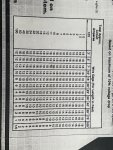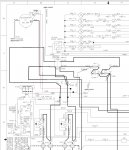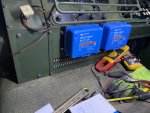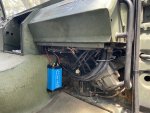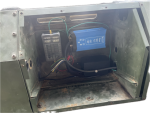Delco 28SI 24V 110 Amp 8600469 8600423 Quad Mount 8762
I got it from eBay. It's technically only 110a but test sheet goes to 130. Mine is the generic knockoff I believe. There's a price bump if you get the non knockoff version. Probably around $300. The OEM style unit has "Delco" name stamped into the black plastic cover on the back. I've seen this labeled with the Cummins label for as much $550. I've circled the cat # on the spec sheet in the 2nd photo.
this bolts into the 4-1/4"set of holes horizontally whereas the neihoff bracket uses the outer holes. Pulley lines up exactly.
this unit has remote voltage sense so I put that in too, fused line back to the batt +. I'm also driving a tach from the ac terminal.
with
@Ronmar help, I was able to use the i terminal to drive the "charging system" warning light on the dash. Just needed a diode in line.
I'm at 28.00 volts while driving normally on my DMM meter. No change really unless the AIH is on. In March I tested the amperage and it was pulling 115 after a startup. That AIH is a hog.
View attachment 926189View attachment 926190View attachment 926191View attachment 926192


